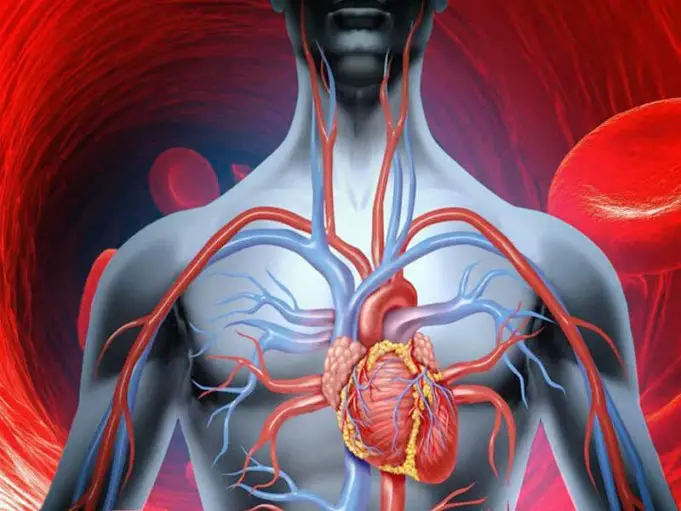Whether you suffer from poor circulation or notice that you quickly get numb when in binds in yoga, poor blood flow has a number of causes. Sometimes it’s genetic, but even if that’s the case there are ways to improve flow and enjoy better health. Low blood flow can also be a side effect of alcohol abuse, and as you search for a treatment finder it’s also a good idea to research avenues to repair damage done by over-indulging in alcohol.
The circulation system of the body is in charge of sending not only blood, but oxygen and nutrients inside of blood through the body. When blood flow is low, symptoms of slow circulation appear. It’s most common in the extremities. However, “poor circulation” isn’t a condition by itself—it’s always caused by something. It’s critical to determine and treat the actual cause instead of just the symptoms.
The most common cause of poor circulation is diabetes, arterial problems, obesity, and various heart conditions. The most common symptoms are tingling, pain, muscle cramps, throbbing, and numbness. Symptoms usually depend on the cause. For instance, a person with peripheral arterial disease can also suffer from erectile dysfunction along with tingling, pain, or numbness. PAD is a leading cause of poor circulation and results in narrowed arteries and blood vessels.
A related issue, atherosclerosis, causes the arteries to grow stiff as plaque builds up inside of them. In time, a lack of blood flow can even lead to tissue and nerve damage. If plaque in the arteries is the cause, it can even lead to a stroke. This is especially important in the carotid arteries, whose job entails bringing blood to the brain. You increase your risk of PAD If you’re older than 50 and/or smoke.
Cause and Concern
Blood clots can also lower blood flow, sometimes partially. They can happen anywhere in the body but are most common in the extremities. There are many reasons blood clots form, and these clots can be dangerous if they move to the lungs, heart, or lungs.
In some cases, a clot can cause a stroke. Varicose veins aren’t just unsightly, but they are caused by a venous valve failure. Most varicose veins are in the legs and are a sign that blood isn’t moving smoothly.
Genetics is a leading factor in this condition. One of the many side effects of diabetes can also be low blood flow. That’s why diabetics often report cramps, especially in the legs. In cases of advanced diabetes, it can be tough to spot low circulation.
Diabetic neuropathy can hide the symptoms of low blood flow because it minimizes sensations. Diabetes is linked to blood vessel issues and heart problems, and if you suffer from this disease you have an increased risk of heart disease, atherosclerosis, and high blood pressure.
There’s also Raynaud’s disease, which presents with cold hands and feet. Raynaud’s makes the arteries in the hands and toes spasm, and the narrower an artery is, the more difficult it is to move blood.
Symptoms get much worse when a person is stressed and/or in cold temperatures. Although rare, Raynaud’s can narrow arteries in other parts of the body, too, especially throughout the face. Those who live in cold environments and women are at a higher risk.
Diagnosis
Only a doctor can diagnose subpar circulation, especially since it can be linked to so many issues. First, you’ll be asked about family history and diseases. This will narrow down possible causes. You may also need to undergo testing to figure out what might be causing your low blood flow symptoms.
It’s impossible to actually diagnose “low circulation,” but doctors consider your symptoms and will pinpoint diseases that can be tested or otherwise diagnosed. Tests may include antibody blood tests for Raynaud’s disease or inflammatory issues, blood sugar testing for diabetes, CT scans or ultrasounds, and blood tests for D dimer if the doctor suspects a blood clot.
Treatment will depend on whether a cause is found. Various conditions require a variety of treatments. However, if no disease or cause is found, there are still ways you can improve blood circulation.
- Wearing compression socks can help you avoid clots. It’s a good idea for anyone to wear these socks on long distance travel, especially if you notice that you get puffy ankles after long flights. Blood clots can break away during shifts in altitude, and simply wearing these socks can truly be a lifesaver.
- There are also various types of exercises designed to increase blood circulation in problem areas. It’s not enough to simply indulge in 150 minutes of cardio per week—that’s foundational for heart health and will help with circulation. However, a physical therapist, doctor, or trainer specializing in low blood flow can give you key exercises such as focusing on wrists or ankle strength building.
- You can opt for laser vein surgery to treat varicose veins if you like. While most of these veins aren’t dangerous, they can be unsightly and, in some cases, develop blood clots. This procedure may be covered by your insurance. It’s usually performed by a dermatologist.
- Medications may help, especially if your doctor suggests you have a blood clot. You may be prescribed blood thinners. If you have Raynaud’s disease, alpha blockers and calcium channel blockers can be prescribed.
- Change how you sit and stand. You might be unintentionally causing low circulation by cutting off circulation in certain poses. If you regularly cross your legs, that might be the primary cause. It can be difficult to change such positions but adopting a more ergonomic lifestyle can lead to fantastic results.
The good news is that many issues that lead to poor circulation are completely treatable. However, if ignored, you may allow a disease to progress. This can cause potentially deadly situations, especially if you have blood clots. Poor circulation may be annoying, but don’t overlook it. It might actually be your body telling you that something is seriously wrong.












